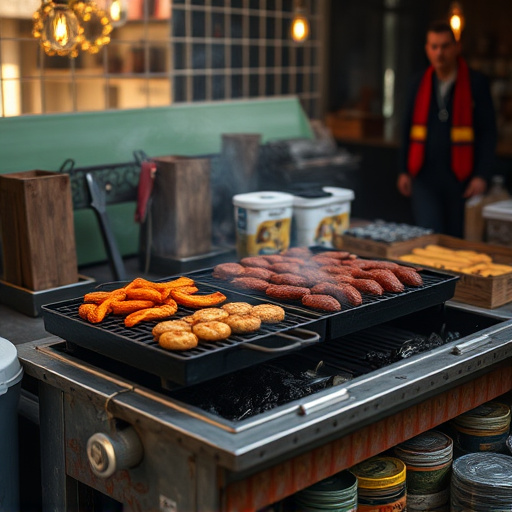Selecting the right lean cuts of beef, chicken, or turkey is essential for crafting high-quality BBQ jerky. Proper preparation, including cutting against the grain and marinating with a balanced blend of spices, ensures tender, flavorful results. Drying at 150-170°F (65-77°C) preserves texture and extends shelf life. A custom seasoning blend with salt, pepper, garlic powder, paprika, chili powder, cayenne, onion powder, and mustard powder enhances flavor. Store properly for up to several months, then bake at 350°F (175°C) for 30-40 minutes to enjoy crispy, smoky BBQ jerky.
“Looking to craft your own mouthwatering BBQ jerky at home? This comprehensive step-by-step guide will transform you into a jerky master! From choosing the perfect meats to seasoning, drying, and packaging, we’ve got you covered. Discover the secrets to achieving tender, flavorful jerky that’s sure to impress. With our simple BBQ jerky recipe, you’ll be enjoying homemade delights in no time, satisfying your cravings without the need for store-bought options.”
- Selecting the Right Meats for BBQ Jerky
- Preparing and Cutting Your Meat
- Marinating: Infusing Flavor and Tenderness
- Drying the Jerky: Temperature and Time Control
- Seasoning: Creating a Delicious BBQ Blend
- Packaging and Storage Tips for Freshness
- Cooking and Enjoying Your Homemade BBQ Jerky
Selecting the Right Meats for BBQ Jerky
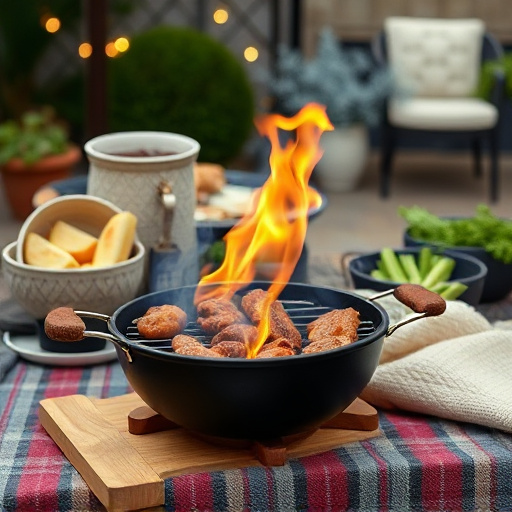
When crafting your perfect BBQ jerky, the first step starts with selecting the right meats. Opt for lean cuts of meat like beef, chicken, or turkey; these ensure your jerky turns out crisp and not overly greasy. Look for cuts with visible marbling—the fat streaks within the muscle—as this adds flavor without making your jerky unappealingly fatty. A good BBQ jerky recipe relies on high-quality ingredients, so don’t skimp on this crucial step.
Consider the texture you desire too. For a chewier jerky, choose cuts like round or brisket; for a more tender option, rib eye or sirloin can work well. Remember, the cutting method matters too; slicing against the grain results in a tenderer, easier-to-chew product. This attention to detail ensures your BBQ jerky recipe turns out delicious and satisfying every time.
Preparing and Cutting Your Meat
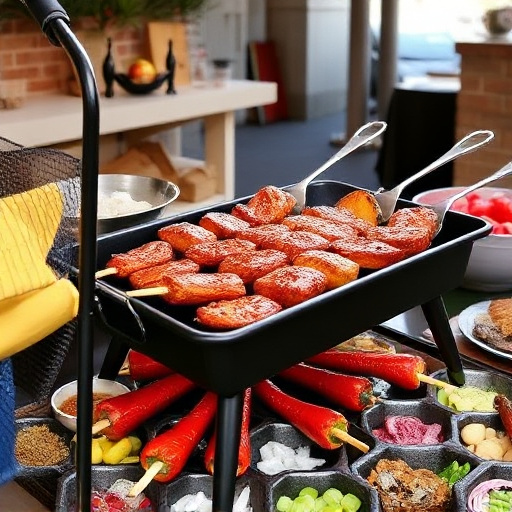
Preparing and cutting your meat is a crucial step in crafting the perfect BBQ jerky recipe. Start by selecting high-quality, lean cuts of meat such as beef chuck or round steak. Remove any visible fat or silver skin, ensuring only tender, flavorful muscle tissue remains. Cut the meat into thin, even strips—this uniform thickness allows for consistent cooking and ensures every piece becomes deliciously crispy.
Consider the ideal cut for jerky: about 1/4-inch thick (or thinner). Use a sharp knife or a meat slicer to achieve this precision. You can also experiment with different cuts like chicken breast or turkey for a healthier BBQ jerky option, but remember, the cooking time and temperature may vary slightly based on the protein type.
Marinating: Infusing Flavor and Tenderness
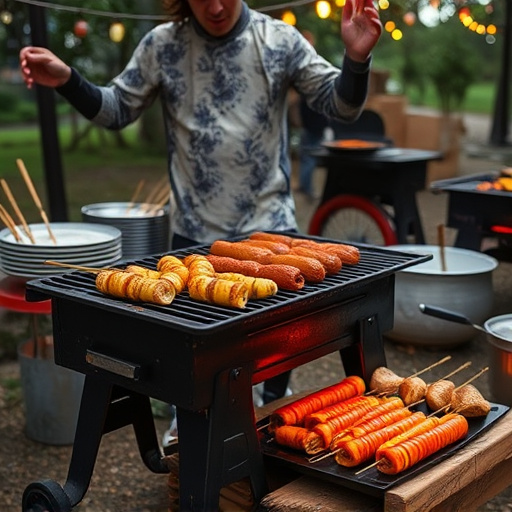
Marinades are a key component in creating mouthwatering BBQ jerky, as they significantly enhance both flavor and tenderness. The process involves soaking your meat (typically beef or chicken) in a mixture of spices, sauces, and other ingredients designed to penetrate and transform the protein fibers. This not only makes the final product more flavorful but also ensures it remains tender and delicious even after being dried.
When crafting your BBQ jerky marinade, consider incorporating a blend of savory flavors like garlic, paprika, salt, and pepper, along with sweeter elements such as brown sugar or maple syrup. Acidic ingredients like soy sauce, vinegar, or citrus juices can also play a crucial role in breaking down the meat’s structure, contributing to its overall tenderness. The right balance of these components will transform your jerky from ordinary to exceptional, making it a standout addition to any BBQ spread.
Drying the Jerky: Temperature and Time Control
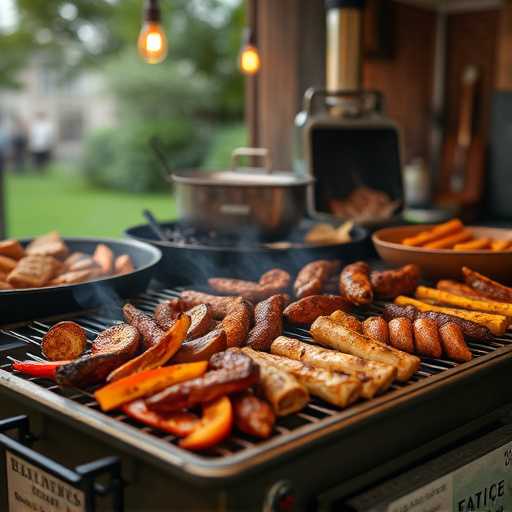
After marinating your meat in a delicious BBQ sauce, it’s time to transform it into tender, flavorful BBQ jerky. Drying is a crucial step in this process, as it allows the meat to become crispy and long-lasting. The ideal temperature for drying BBQ jerky typically ranges between 150°F to 170°F (65°C to 77°C). At these temperatures, your jerky will take anywhere from 4 to 8 hours to fully dry, depending on the thickness of the slices and your preferred level of crispiness.
Remember, consistent temperature control is key. Using a food dehydrator can make this process easier by maintaining a steady heat, ensuring even drying. Alternatively, you can use an oven set to a low temperature, but monitor the jerky closely to prevent over-drying. The goal is to remove moisture while preserving the meat’s flavor and texture, resulting in a perfect, crispy BBQ jerky treat!
Seasoning: Creating a Delicious BBQ Blend
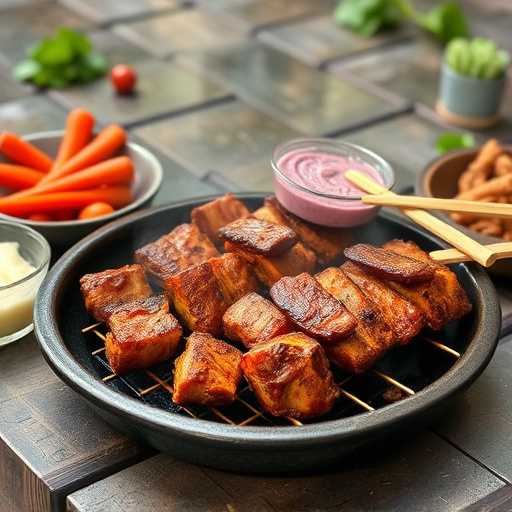
Creating a delicious BBQ jerky blend is an art that elevates your homemade BBQ jerky recipe to new heights. Start by combining salt, pepper, and garlic powder for a classic trio that forms the foundation of many great BBQ seasonings. Next, add smoky flavors with paprika, chili powder, and a touch of cayenne pepper for heat—adjusting the amount based on your preference. Don’t forget to incorporate onion powder or granulated onion for added depth and sweetness, along with mustard powder for a tangy kick. Mix these ingredients thoroughly until you have a uniform blend that clings well to the meat. Experiment with different ratios to create your perfect BBQ jerky seasoning mix, ensuring it packs the punch and flavor you expect from a high-quality BBQ jerky recipe.
Packaging and Storage Tips for Freshness
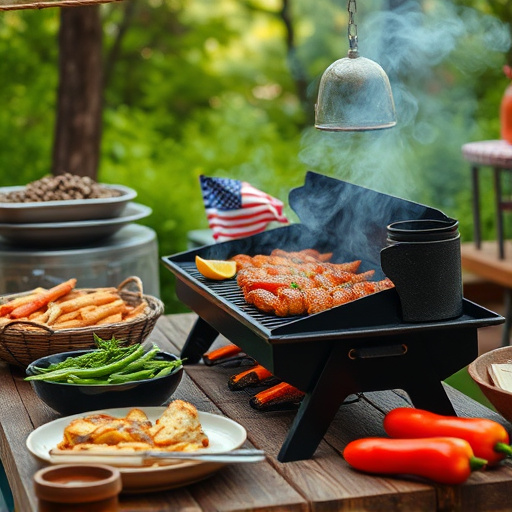
After carefully preparing your BBQ jerky using our step-by-step guide, it’s crucial to ensure its freshness and quality. Proper packaging and storage are key to maintaining the delicious taste and tender texture of your homemade jerky. Opt for airtight containers or vacuum-sealed bags to protect against moisture and air exposure, which can cause spoilage. Store your BBQ jerky in a cool, dry place; a pantry or fridge is ideal. For extended shelf life, consider freezing it – this can preserve its freshness for several months. When ready to enjoy, simply thaw or take out a portion as needed, ensuring each bite of your DIY BBQ jerky recipe remains as mouthwatering as the day you made it.
Cooking and Enjoying Your Homemade BBQ Jerky
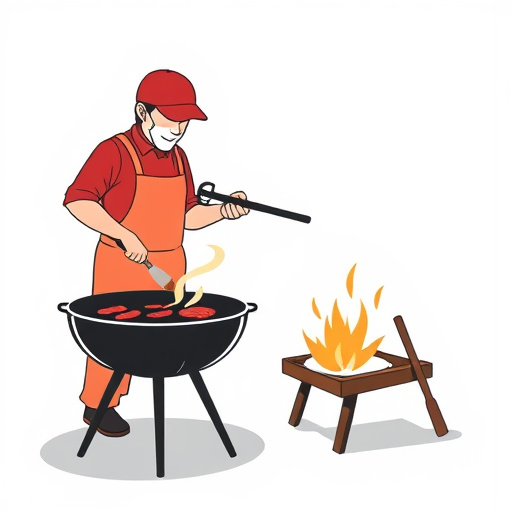
After carefully preparing and dehydrating your homemade BBQ jerky, it’s finally time to cook and savor your creation! Cooking your jerky for the first time transforms the tender slices into a mouthwatering snack. Preheat your oven to around 275°F (135°C) to achieve the perfect result without overcooking. Place the jerky on a wire rack inside a baking sheet, ensuring even air circulation. Bake it for approximately 30-40 minutes, stirring occasionally to prevent sticking and ensure even browning.
The aroma of your BBQ jerky recipe will fill your kitchen as it cooks, making your taste buds water. Once baked, remove the jerky from the oven and let it cool completely before breaking it into bite-sized pieces. Enjoy its crispy texture and rich, smoky flavor—a testament to your culinary skills and hard work in crafting the perfect BBQ jerky recipe.
